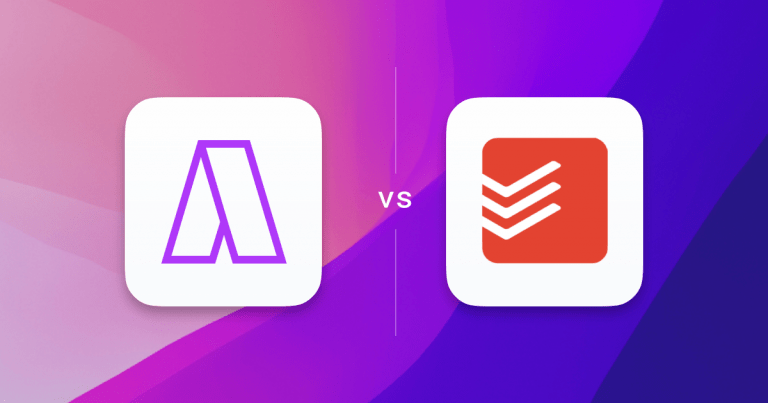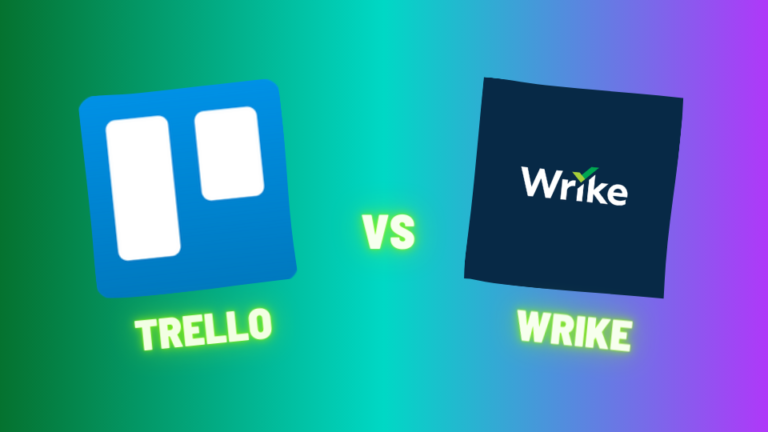What is Trello
It’s known for its easy-to-use Kanban board approach but also offers other views like timelines and calendars. Trello is great for visual organization and team collaboration, with features like customizable cards, labels, and notifications. However, it may be less feature-rich compared to some alternatives like ClickUp or Monday.com, particularly in areas like advanced reporting or analytics. Trello’s simplicity makes it accessible but might not suffice for complex project management needs.
Key Features of Trello
- Board Organization: Trello’s boards enable visual management of projects using lists and cards, enhancing visibility and tracking.
- Customizable Cards: Cards can be enhanced with descriptions, checklists, labels, and attachments, providing essential task details in one place.
- Team Collaboration: The platform supports real-time team collaboration, ensuring everyone is updated and in sync.
- Drag-and-Drop Interface: Its intuitive interface allows easy movement of cards between lists for updating priorities and workflow.
- Labels and Filters: These help in categorizing and organizing tasks, with customizable label colors and names.
- Notifications and Reminders: They keep users informed about due dates and important updates, ensuring task deadlines are met.
What is Wrike
Wrike is a project management software designed to help teams manage their workspace and projects more efficiently. It offers a traditional interface with a wide range of functionalities including tables, boards, Gantt charts, and templates for collaboration across remote, hybrid, and in-person teams. Wrike supports various types of file proofing and integrates well with other tools like Miro, Microsoft Teams, and Slack. It is particularly popular among marketing and sales teams for its resource management and time logging features.
Key Features of Wrike
- Interactive Gantt Charts: Wrike’s Gantt charts allow users to visualize project timelines and dependencies. This feature helps in planning and adjusting schedules with simple drag-and-drop adjustments, facilitating easy management of complex project timelines.
- Real Time Collaboration: Teams can collaborate in real time, with updates and communications happening instantly across the platform. This ensures that all team members are on the same page and can react quickly to changes or updates.
- Customizable Dashboards: Wrike offers fully customizable dashboards that give users control over what data they see and how it’s presented. This helps in tracking the most relevant project metrics and individual tasks, tailoring the view to meet specific needs or roles within a team.
- Integrated Resource Management: The software includes tools for resource allocation and management, allowing managers to oversee team workloads, plan capacity, and distribute tasks efficiently to avoid overloading employees.
- Advanced Security Features: Wrike provides robust security measures, including role-based access control, to ensure that sensitive project data is protected and only accessible to authorized personnel.
- Automation Tools: With Wrike, repetitive tasks can be automated using custom workflows, which saves time and reduces the potential for human error. This feature supports a smoother project flow and improves overall efficiency.

Trello vs Wrike: Features
| Features | Trello | Wrike |
|---|---|---|
| Integrations | Trello integrates with several apps including Google Drive, Google Chat, Google Hangouts, Google Slides, Jira, Slack, GitHub, Dropbox, and Zendesk | Salesforce, Microsoft Teams, Google Drive, Slack, Adobe Creative Cloud, and Zoom |
| Calendar | Yes. Trello offers a Calendar view which is available for Premium and Enterprise plans. | Yes |
| Platforms | macOS, iOS, Android, Web, and Windows | Yes |
| Task Management | Trello provides features like advanced checklists, labels for prioritization, and the ability to manage recurring tasks | Task Creation and Updating, Multiple Viewing Options, Time Tracking, Templates, Comprehensive Task Reports, Task history logging, File Uploads and Sharing capabilities |
| Natural Language Processing | No | No |
| Time Blocking | While Trello itself does not have a native time blocking feature, it can be used in conjunction with time blocking techniques | Yes |
| Analytics | Trello offers basic task analytics, particularly when integrated with tools like Zapier and Google Sheets for data analysis. | Yes |
| Meeting Scheduler | No | Yes |
| Time Zones | Yes | Yes |
| Reminders | Yes | Yes |
| Customer Support | Good | Good |
| 1:1 User Onboarding | Not mentioned on their website | Yes |
| Pricing | Free Plan for individuals and small teams, Standard Plan at $5 per user/month (billed annually), Premium Plan at $10 per user/month (billed annually), and an Enterprise Plan for larger organizations at $17.50 per user/month (billed annually) | Free, Professional at $9.80/user, Business at $24.80/user, and Enterprise. Each varies by features and team size |
Trello vs Wrike: Pricing
Trello Pricing
Trello offers several pricing plans:
(i) Free Plan: $0, suitable for individuals or small teams to organize projects.
(ii) Standard Plan: $5 per user/month (billed annually) or $6 monthly, for small teams needing work management and collaboration scaling.
(iii) Premium Plan: $10 per user/month (billed annually) or $12.50 monthly, for teams tracking multiple projects with various visualization tools.
(iv) Enterprise Plan: $17.50 per user/month (billed annually), providing connectivity, security, and controls for organizations.
Wrike Pricing
Wrike offers several pricing plans based on the size and needs of teams. Here’s a brief overview:
(i) Free Plan: Designed for teams just starting out, offering basic project management features with limitations on active tasks.
(ii) Professional Plan: Costs $9.80 per user/month, suitable for teams of 2-25 users, offering unlimited projects, tasks, and 2 GB of storage per user.
(iii) Business Plan: Priced at $24.80 per user/month, tailored for larger teams, it includes comprehensive project management tools, automation, approvals, and 5 GB of storage per user.
(iv) Enterprise Plan: For large teams needing enterprise-grade security and scalability, with pricing available upon contact. It includes advanced security features, automation, and 10 GB of storage per user.
(v) Pinnacle Plan: Aimed at teams with complex work needs, offering advanced analytics, 15 GB of storage per user, and premium features, with pricing available upon request.
Trello vs Wrike: Reviews
Trello Review
Trello is highly regarded for its visual project management capabilities, particularly its use of the Kanban system. It’s appreciated for its ease of setup and the variety of views it offers, making it a favorite among both specialist and generalist users. Trello’s array of features, including multiple views, detailed card information, and numerous integrations, contribute to its effectiveness.
However, it’s noted that Trello has been slow in developing certain features. This aspect might affect users looking for a more feature-rich experience. Trello is considered suitable for small to medium-sized teams, as well as large teams, and it provides a great individual user experience too. Its simplicity and lower learning curve compared to tools like Notion make it easy to learn and implement.
Wrike Review
Wrike is a project management tool praised for its extensive functionality, which is especially beneficial for teams in marketing and sales. It offers a variety of views like Gantt charts, dashboards, and tables which enhance project visibility and management. Wrike integrates well with other tools such as Miro and Slack, making it versatile in different working environments. However, the platform is not without its shortcomings. New users may find it challenging to navigate due to the complexity and abundance of features. The design is more functional than aesthetic, which might not appeal to users who prefer a more modern interface. This could detract from the user experience, particularly when compared to simpler or more visually appealing tools like monday.com or ClickUp. Despite these issues, Wrike remains a solid choice for comprehensive project management needs.
Which One Should You Pick
Consider Trello if
- You need a user-friendly project management tool: Trello is great for those who prefer a simple, visual approach to task and project management with its easy-to-use Kanban boards.
- Your team requires basic project management features: Trello is suitable for teams that need straightforward project management capabilities without the complexity of more advanced tools.
- You rely on integrations but don’t need extensive features: Trello offers a range of integrations through its Power-Ups, but it may not be as comprehensive as some other tools for users requiring advanced features.
Consider Wrike if
- You Need a Range of Project Management Tools: Wrike might be suitable if you’re looking for a project management platform that includes diverse organizational tools like Gantt charts and dashboards, though it may be more complex than necessary for simpler projects.
- Your Team Requires Collaboration Features: Wrike facilitates collaboration among teams, especially in creative and marketing sectors. However, its interface and wealth of features can be overwhelming for those unused to comprehensive project management software.
- Integration Is Key to Your Workflow: If integrating with other applications like Miro and Slack is crucial, Wrike offers these capabilities, but keep in mind the potential steep learning curve for navigating its extensive feature set.
Best Trello and Wrike Alternative
Akiflow: Akiflow is a time management app offering time blocking, task scheduling, and integrations with various tools. It focuses on productivity and organization through a unified task and appointment interface.
Akiflow Price: $19 per month, paid annually

Best Time Blocking Web and Desktop Apps, 2024
Explore the best time blocking apps of 2024! Discover how Akiflow, TickTick, Usemotion, Sunsama, Sortedapp, and TimeHero revolutionize productivity, offering unique features for professionals and students to manage tasks and enhance efficiency.

Improve Focus: 5 ADHD Productivity Tools & Calendar Apps for 2023
Discover five of the best apps and tools for those with ADHD, from note-taking apps to time-blocking platforms. Get ready to stay organised, motivated and on track with Akiflow’s essential guide.

The Top 3 Todoist Alternatives (In-Depth Review)
Over 25 million people now use Todoist to stay on track and plan their day. It has expanded rapidly and is now a widely used task manager with seamless integrations into other task and calendar managers like Akiflow. While Todoist is hugely popular among its wide user base, there are now a variety of Todoist […]

